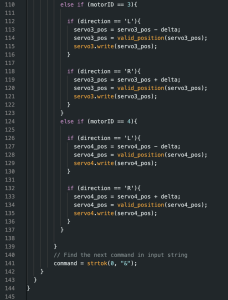As we finalized our design through working on the design doc, the biggest risk of our project is the speed of the car affecting our ability to track it. As of now, we have not done too much on track testing to see if our tracking latency is too slow for a close up camera locations, but our contingency plan is to simply place the cameras further away from the track as needed, to reduce the amount of rotation the camera has to make to track the car.
We made a big switch to change our project to this car tracking one. So in terms of design, we weren’t changing much, just brainstorming for the first time. Through working on the design doc, we were able to come up with challenges we may face, especially in our own parts (hardware, tracking, feed selection). Although we are very late in our idea decision, we are glad we switched as it will be a busy but better experience for all of us.
Our most recently updated schedule is the same as the one submitted on the design document.
Part A was written by Jae Song
On the global scale, our Cameraman product will offer a better approach in live streaming car racing. On the safety side of capturing footage, auto-tracking cameras will hopefully be implemented globally so that no lives are under danger. Car racing is a global sport so our product will definitely have an impact. Not only is global safety being addressed, but we hope that our auto-generation of stream will capture races in a more timely and accurate manner, to enhance the experience of the global audience.
Part B was written by Thomas Li
The multi-camera live-streaming system we design seeks to meet the cultural needs of today’s car sports enthusiasts, specifically F1 racing culture. Primarily, we do this by providing the viewing experience already established among fans as optimal through algorithmic feed selection. There is already a culture established by race casters, real cameramen, racers, and viewers that we will analyze to determine this optimal viewing experience.
Part C was written by Bhavya Jain
Given our system of cameras closely mirrors that which already exists (with the addition of automated movement, and software for automated feed construction) there seem to be no glaring environmental factors that we feel we must consider. The movement of the cameras will consume some power that was previously a physical force and overall running of the system will consume some power. Motor racing is a very demanding sport in terms of material and power requirements, but our system does not add any significant pressure to these requirements.




